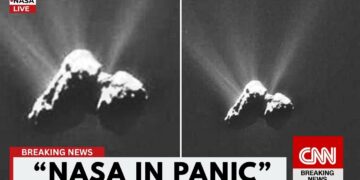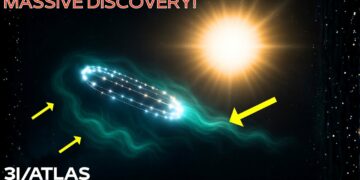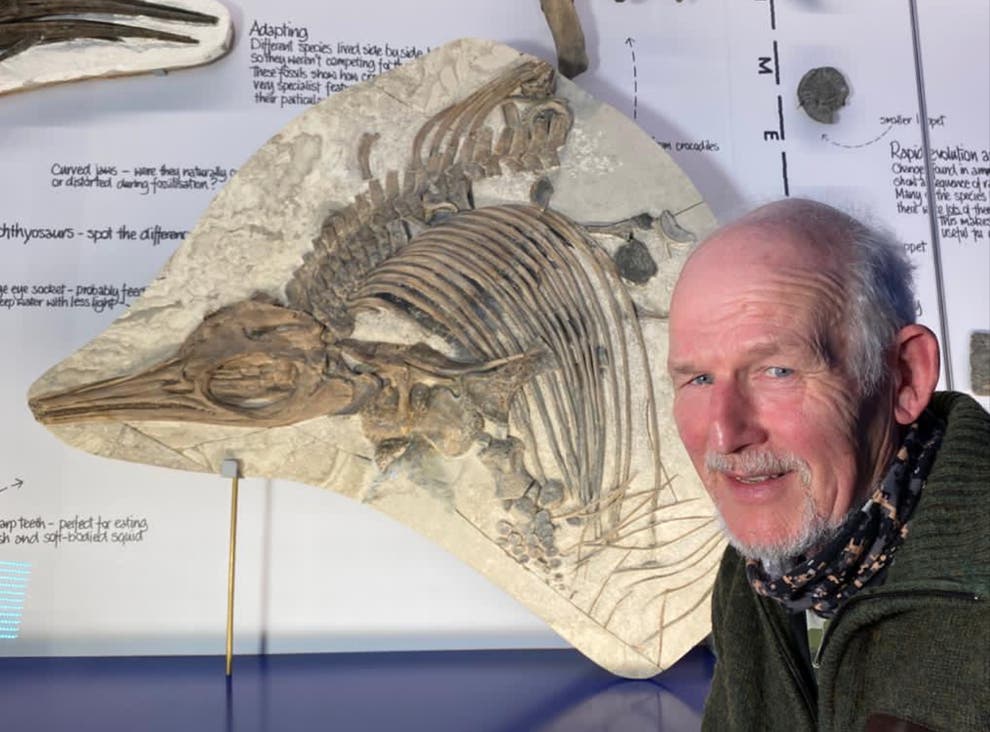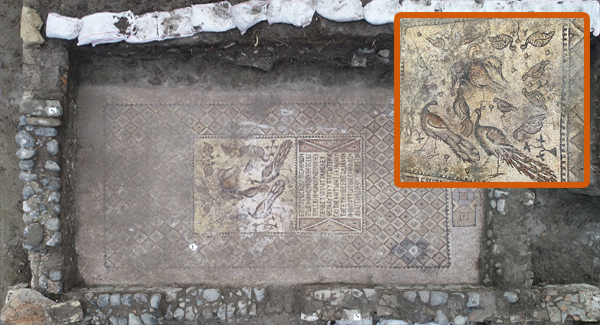For the first time in history, the James Webb Space Telescope has captured 3I/ATLAS, an object moving through our solar system that defies conventional explanation. Officially called an interstellar comet, its trajectory, speed, and structure are unlike anything astronomers have ever observed. While NASA attributes it to natural phenomena, leading scientists such as Avi Loeb have suggested it may be an intelligently engineered craft, potentially an alien probe quietly traversing space. Could this be the first concrete evidence that we are being observed by an advanced civilization?
The Discovery of 3I/ATLAS
Discovered by the ATLAS survey telescope in Chile, 3I/ATLAS immediately caught astronomers’ attention due to its hyperbolic trajectory. Unlike ordinary comets, it is moving far too quickly to have originated within our solar system, and its acceleration does not entirely match expectations from gravitational forces alone. Observatories worldwide rushed to collect data, and the James Webb Telescope provided the first high-resolution images, revealing a shape and surface composition that defy standard models.
The discovery came during routine sky surveys, but the object’s characteristics were so peculiar that it immediately made headlines across international astronomy journals. Its path suggests it entered our solar system from a direction inconsistent with known stellar motions, indicating an interstellar origin. This makes 3I/ATLAS only the third confirmed interstellar object ever observed, following the discoveries of ‘Oumuamua in 2017 and 2I/Borisov in 2019.
Unusual Characteristics That Defy Natural Explanations
Trajectory and Speed
3I/ATLAS is moving along a precise path that suggests intentional navigation rather than random celestial drift. Its velocity exceeds predictions based purely on gravitational dynamics, prompting speculation that unseen forces might be influencing its motion. This observation has forced scientists to revisit our models of interstellar object behaviour and question whether our understanding of natural physics is complete.
Acceleration Anomalies
Observers noted acceleration inconsistent with typical cometary outgassing, which is usually caused by sublimation of ice and dust. These anomalies suggest that either unknown natural mechanisms are at play, or the object possesses some form of internal propulsion, potentially indicating artificial design.
Surface Composition
High-resolution imagery reveals a reflective icy crust interspersed with metallic elements uncommon in natural comets. Some researchers argue this could indicate deliberate engineering or unknown material science, further fuelling the alien technology hypothesis. Spectral data is still being analysed, but preliminary results suggest a density and chemical profile unlike known comets or asteroids.
The Case for Alien Technology
Astrophysicist Avi Loeb and other proponents suggest these anomalies indicate artificial origins. Its speed, combined with the highly tuned trajectory and unusual composition, could point to an interstellar probe designed to monitor Earth. Decades ago, Stephen Hawking warned that broadcasting our existence might attract attention from advanced civilizations—and 3I/ATLAS may represent the first tangible response
Signs of Intelligent Design
Deliberate trajectory corrections impossible for natural comets.
Rotational stability inconsistent with tumbling debris.
Structural asymmetry resembling engineering rather than geological formation.
Supporters of this theory suggest the reflective metallic patches could be components designed to manage solar radiation or communicate signals back to its origin. If true, this would represent the first clear evidence of extraterrestrial technology within our solar system.
Counterarguments and Scientific Scepticism
Despite the intrigue, mainstream science urges caution. NASA claims the apparent anomalies can still be explained by natural outgassing, uneven ice sublimation, or previously unknown cometary physics (Financial Express). Other experts note that projecting “intelligence” onto unexplained phenomena risks bias. The truth may lie in a combination of natural science and our limited understanding of interstellar objects.
Astronomers also point out that previous objects like ‘Oumuamua initially sparked alien craft theories but were eventually attributed to natural causes after detailed observation. Critics argue that 3I/ATLAS may follow a similar pattern, emphasizing the need for rigorous data collection before drawing conclusions.
Implications if Alien Technology Is Confirmed
If 3I/ATLAS is indeed an alien craft, the consequences are profound:
Humanity may no longer be alone in the galaxy.
Advanced extraterrestrial civilizations could have been monitoring Earth for centuries.
This could redefine astronomy, engineering, and even geopolitics as nations prepare for potential contact.
Such a discovery would challenge not only scientific paradigms but also cultural and philosophical perspectives. It may inspire a new era of technology development, as humanity attempts to reverse-engineer or communicate with the technology.
Scientific and Public Reactions
Public interest exploded online and in mainstream media, with debates spanning YouTube, Twitter, and scientific journals. Speculative reports from The Sun suggest it may even be a “dormant spacecraft” observing Earth, while academics stress the importance of objective data collection. Social media forums are now filled with amateur astronomers sharing observations and possible interpretations, highlighting both excitement and controversy.
Future Observations and Research
The James Webb Telescope continues to track 3I/ATLAS, collecting spectral data that may reveal organic compounds, metallic elements, or hidden structures. Planned missions from ground-based observatories aim to determine:
Composition of surface and interior.
Rotational dynamics and possible propulsion systems.
Interactions with solar radiation and cosmic particles.
Upcoming international collaborations may even attempt to send a probe closer to 3I/ATLAS to gather direct measurements, though the technical challenges are immense. If successful, this could revolutionize both astronomy and space exploration.
Historical Parallels
Some experts draw comparisons to previous interstellar visitors, like ‘Oumuamua in 2017, which also sparked alien probe speculation. Like 3I/ATLAS, ‘Oumuamua exhibited unusual acceleration and a cigar-like shape, prompting similar debates. These patterns suggest our solar system may occasionally host objects of potential intelligence origin (Science Alert).
Studying these objects together may help establish criteria to distinguish natural interstellar objects from potential artificial probes. This could lead to the development of a new field of “interstellar archaeology,” bridging astronomy, physics, and astrobiology.
Conclusion
While natural explanations for 3I/ATLAS remain viable, its unique characteristics leave open the tantalising possibility that we are witnessing alien technology for the first time. Only continuous observation, rigorous analysis, and open scientific discourse can uncover the truth. Whether it is a comet or a craft, 3I/ATLAS has already challenged our assumptions about the universe and humanity’s place within it.
The cosmos may be watching—and this time, we finally have the proof to begin asking the right questions.























